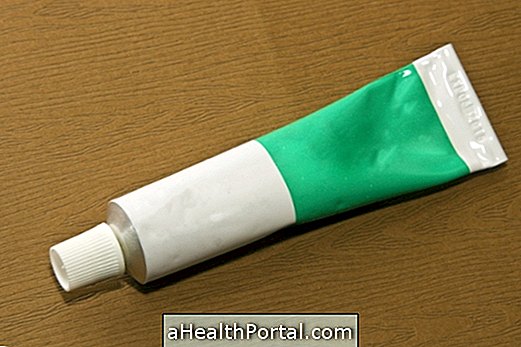Bacteremia is the presence of bacteria in the bloodstream, which can happen due to surgical procedures or as a result of very strong tooth brushing, for example.
The presence of bacteria in the blood does not lead to the onset of symptoms, however, as blood is one of the main routes of dissemination of the bacteria, the microorganism can target different parts of the body and cause a generalized infection, also known as septic shock . Understand what it is and what the symptoms of septic shock are.
The treatment of bacteremia is done with antibiotics depending on the species of the bacterium and its sensitivity profile, which is provided by the antibiogram. The use of antibiotics should be done according to the doctor's recommendation to avoid the emergence of resistant bacteria and possible complications. Learn how to take antibiotics properly.

Main symptoms
The presence of bacteria in the bloodstream is usually asymptomatic; however, when the immune system responds because of the presence of the organism, there are symptoms that may be characteristic of sepsis or even septic shock, such as:
- Fever;
- Change in respiratory rate;
- Chills;
- Decrease in pressure;
- Increased heart rate;
- Change in the concentration of white blood cells, which can make the person more susceptible to diseases.
These symptoms arise due to the housing of the bacteria in other regions of the body, such as artificial organs or materials present in the body, such as catheters or prostheses. Learn more about septicemia.
How to identify
The bacteremia is diagnosed laboratorially by means of the hemogram, in which diminished values of leucocytes are observed and changes that suggest infection. In addition, a blood culture is performed, which is the microbiological examination in which the blood is cultured in the laboratory in its own container and under the ideal temperature conditions. The collection of blood for blood culture should be done by an experienced professional, as it is very easy to contaminate the material collected with the bacteria present on the skin, which may indicate a false positive result.
When blood culture is positive and the microorganism identified, the isolation of the bacteria is performed so that the antibiogram can be done in order to check which antibiotics the microorganism is sensitive or resistant, thus indicating the best medicine to treat bacteremia. Understand how the antibiogram is done.
In addition to blood culture, the doctor may request urine examination, uroculture, sputum evaluation and wound secretion culture, for example.
Causes of bacteremia
Bacteremia can be caused by everyday situations, such as brushing teeth very hard, which can cause bacteria that are present in the oral cavity to enter the bloodstream, or due to surgical or dental procedures.
In addition, bacteremia may be a consequence of another infection or due to the use of non-sterile objects, such as in the case of drug users, for example.



















